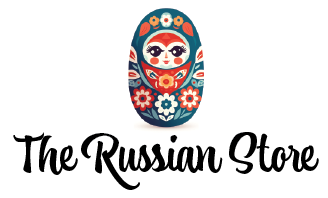Russian Lacquer Boxes from Fedoskino, Palekh, Kholuy, & Mstyora
Russian lacquer boxes are currently being made today in Russia the same way they were made over two centuries ago. Originally used for snuff about 200 years ago, today they have evolved into many different shapes and sizes for use with various things like jewelry, money, and of course nick-knacks. This proves that they have a wonderful history worth maintaining. Russian lacquer boxes have been through a Revolution and though the subject matter changed, the method for making and painting these boxes has not changed.
Originally, the use of lacquer ware began in China and later spread throughout Asia. In 1721, Peter the Great instructed the people that Monplaisir Palace in St. Petersburg was to be adorned with ninety four lacquered tiles. These tiles were then painted by Russian artists and eventually the skilled Russian artisans began to devote more attention to the technique of lacquer painting.
It was then in the mid 18th century, when tobacco became affordable to the everyday man, and the need for a box to hold the snuff or cigarettes became in high demand. The wealthy had stored their snuff in boxes made out of ivory, gold, and other precious materials, and an inexpensive alternative became lacquer boxes.
A traveling man named Pyotr Korobov came across the factory of Johann Heinrich Stobwasser in the German city of Braunschweig. Korobov was intrigued by the lacquer items and took supplies back home with him to make his own. The year was 1795. Generations and many years later, the first Russian lacquer art factory is still going strong in the village of Fedoskino.
Including Fedoskino, there are four main areas/styles that Russian lacquer boxes come from. They are:
- Fedoskino
- Palekh
- Kholuy
- Mstyora
Each region has its own unique style and method. The main difference between these four areas is that Fedoskino uses oil paints while the other three areas use egg tempura paint.
Another difference is what they paint and how they paint it. Fedoskino is known for realistic impressionistic scenes, while the other three focus on relic paintings that tend to be less realistic. Originally, Palekh made relic paintings for the rich; Kholuy and Mstyora made relic paintings for the middle-class and poor.
Fedoskino
Fedoskino is the most known world-wide and oldest of the art villages (1795), with a style of remarkably realistic impressionistic people and scenes, painted on papier-mâché with oil. Fedoskino lacquer miniatures are the only ones that use traditional oil paints (as opposed to egg-tempura). The oil paint (both opaque and transparent) is applied in a 3-part process providing amazing depth and realness. To this day, the intricate and time consuming process of Fedoskino lacquer boxes has never changed.
It is interesting to note that the earliest versions of Fedoskino lacquer boxes were trademarked "Petr Lukutin," who inherited the factory in 1828. Lukutin’s son Alexander then inherited the factory in 1843, and Lukutin remained the trademark until 1904 when the factory closed. A group of craftsmen re-opened the factory in 1910 and called it Fedoskino Artel.
Fedoskino lacquer boxes are some of the most expensive lacquer miniatures around, because they are much more than a Russian souvenir… they are truly art masterpieces.
Vishnyakov was Fedoskino’s competition, known for winter scenes and troikas on black backgrounds.
In 1931, a new vocational school was opened to further pass down the Fedoskino tradition. Some artists from the infamous Fedoskino village are S.I. Kozlov, G.I. Larishev, G.V. Skripunov, Y.L. Dubovikov, and Y.S. Shishkin.
Palekh
Palekh appeared at the beginning of the 20th century and focused on relic paintings, almost always on a black background. Along with historical subjects, Palekh’s artists also painted contemporary themes and scenes of rural life, such as threshing, harvesting, and hay-mowing. Their depictions of humans (accurate silhouettes of flattened figures) tend to have much longer bodies than those of Kholuy or Mstyora. Palekh lacquer boxes almost always have a hand-painted golden border design.
Ivan Golikov and his brother-in-law Aleksandr Glazunov formed the Old Painting Artel, and were the two artists that really gave Palekh a name for Russian lacquer miniatures. Other artists for this area are Vladimir and Natalie Buldakovs, Nikolay Gribov, Yury and Ekaterina Schanitsyns, Vadim Zotov, Anna Kamanina, Nikolay Lopatin, Lyubov Nekrasova and Olga Subbotina.
In Palekh the paints are mixed with egg emulsion. Water and vinegar are added to the yolk which is separated from the egg white.
All Palekh pieces now have the trademark "fire-bird." From 1989 to 1991 there were pieces with the trademark "feathers of fire-bird," and in 1992 "Made in USSR" changed to "Made in Russia."
Kholuy (Kholui, Holui)
Kholuy Lacquer Boxes are known for their dynamic and colorful compositions. Production of Kholuy lacquer miniatures started in 1934. In 1960 it was recognized as Kholui Factory of Lacquer Art Miniatures, and now Kholui Industrial-Art Workshops of the Union of Artists of Russia. Kholui miniatures use both the light backgrounds of Mstera and the dark of Palekh, but most of their pieces have a green or red background. The painted scenes may sometimes cover the entire surface of the form.
Sergey Teplov, Alexander Alexeevich Smirnov, Vladimir Sedov, Larisa Poturaiko, Boris Novoselov, Lev Nikonov, Tatiana Leonidovna Milyushina, Alexander Kopienko, Mikhail Vladimirovich Komarov, Sergei Mikhailovich Dmitriev, Evgeny Vlasov, Viktor Veselov, Vladimir Konstantinovich Blinov, and Nina Babarkina are all artists from this region.
Mstyora (Mstiora, Mstera)
Mstyora is mostly known for their "creamy" earth-tone colors. Often pale blue, pink, and orange colors are used for the background. They like to paint characters from real life, folklore, and literary and historical works. Faces of people painted in Mstyora style tend to have a cartoon feel.
Mstyora artel has been known as Ancient Russian Folk Painting and Proletarian Art before being turned into a factory in 1960.
Lev Alexandrovich Fomichov is the most famous artist from this region.
{{widget type="awautorelated/widget_block" block_id="34"}}